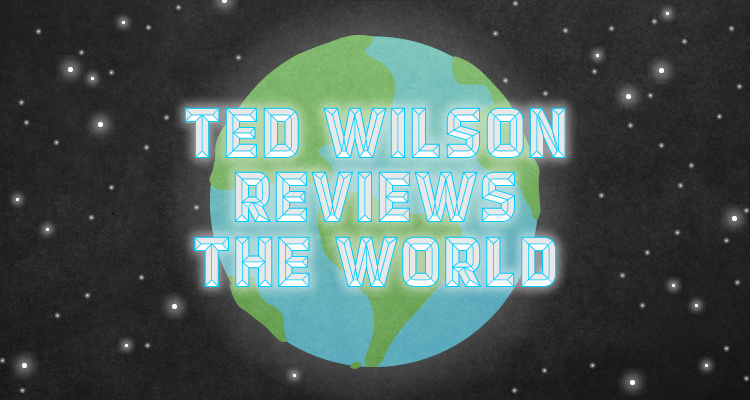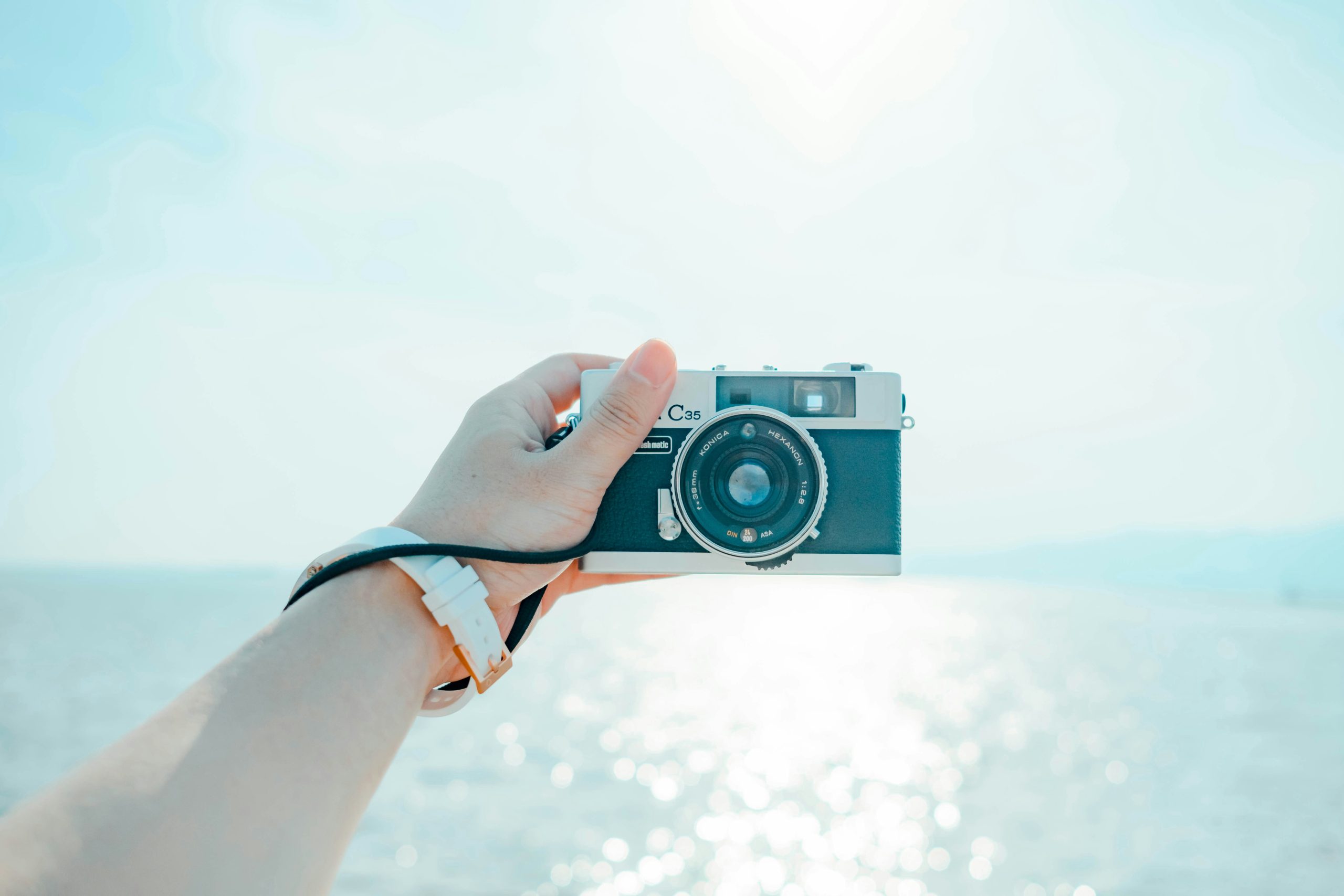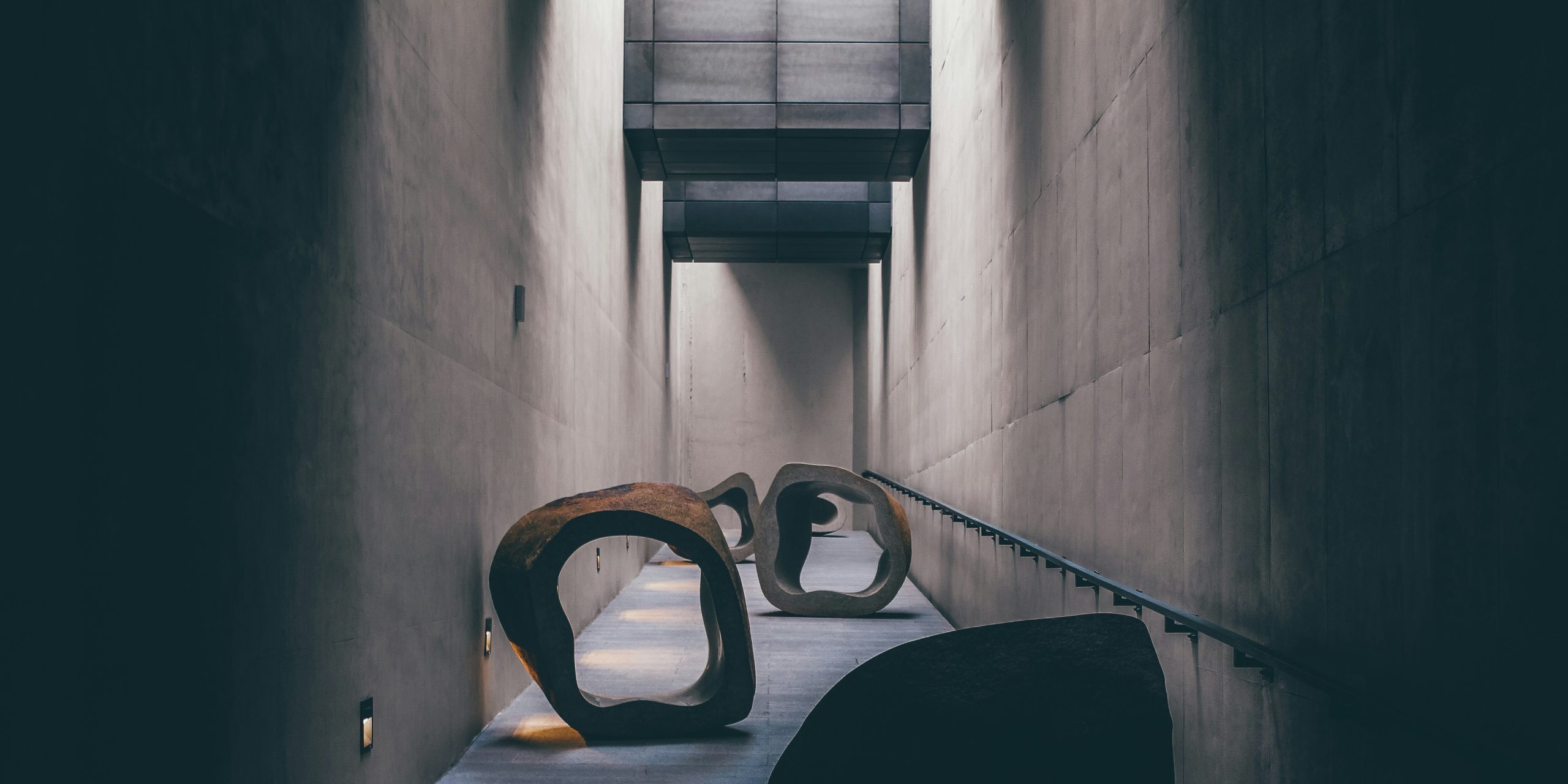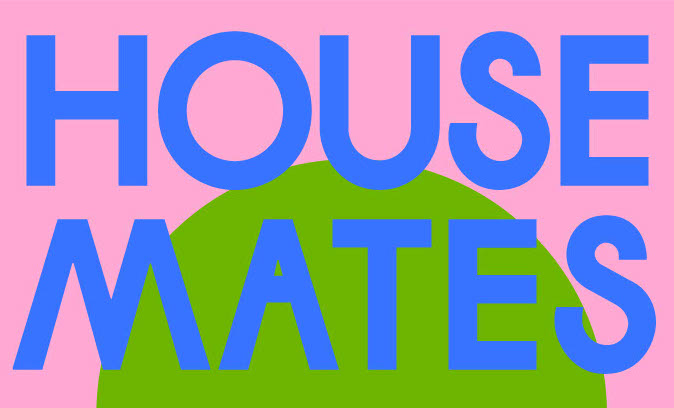Books & Culture
Bedtime Stories for Ghosts
Reading Aristotle to Coco Chanel and other encounters in a massive art installation

Who killed Cock Robin?
I, said the Sparrow,
with my bow and arrow,
I killed Cock Robin.
— the English nursery rhyme “Who Killed Cock Robin?” published c. 1744
What is silent reading but a private, intimate act? Just you, alone in your head, and a text. Fingers on the page. Quiet breath. Mind moving at its own speed, thoughts wandering and returning. Poaching ideas. But reading doesn’t start out that way. Reading starts with a connection. Child and adult, most often. Reading happens aloud, expelling air, sounds, letters, words forming concepts. We learn language and reading through stories of animals. The sheep goes baaa. The cow goes moo. The Little Rabbit. The Hungry Caterpillar. Bambi. Black Beauty. Reading connects us to others, to things beyond ourselves. Held in a lap, listened to from a bed, and, then, later, alone, your eyes on a text, another’s ideas mixing with your mind.
Ann Hamilton’s the common S E N S E, an immersive exhibit at the Henry Art Gallery in Seattle in which I participated, grew out of Aristotle’s premise that touch is the sense common to all species. The show explored touch and our relationship to nature through scanned images of taxidermy animals (birds, amphibians, mammals), clothing made of animals (fur, feathers, gut), and children’s ABC primers and bestiaries. It contemplated physical touch and being touched, emotionally and intellectually, through the private act of reading.
Visitors were invited to take the images of animals, printed to pads of newsprint hung on the walls. In return, they were asked to add to the exhibit in a special photo booth. The human portraits, taken behind a thick translucent sheet of plastic, are blurred in the same manner of the animal scans: only the body parts in direct contact with a surface (the scanner for the animals, the sheet for the humans) are in focus. As the animal images depleted over time, the human images accumulated.
The show invited participation in other ways, too: chorale singers from the University of Washington wandered the rooms and sang to objects. And reader/scribes sat beside them and read aloud from a common text. I participated as a reader/scribe.
The reader/scribe activity goes as follows: you get a lap desk, clip-on reading lamp, a copy of the common text, a log book, and a pencil. In the fall and winter, the common text was J.A. Baker’s The Peregrine, a book about one man’s six-month expedition tracking a hawk. In the spring it was Mercè Rodoreda’s Death in Spring, a lush, mythic novel exploring violence in the natural landscape and cruelty among humans. One copy of Aristotle’s Meteorlogica was available as an alternate text throughout the year.
You choose an object in the gallery (an animal scanned to newsprint in the north galleries or an item of clothing, encased in a curtained vitrine, in the east galleries), pull up a stool up to it, and read aloud to it, from the book. It is like reading a bedtime story. There is an optional wool blanket, embroidered with an image of Cock Robin that you may sit on top of for extra cushioning, or drape over your lap for warmth — or to cocoon inside. As you read aloud, you copy passages you especially like into the log book and reread them aloud at the speed of your handwriting. That log book accumulates text and becomes an artifact of the collective reading experience of all the reader/scribes.
I first chose a ruby-throated hummingbird. Though I could not see its eyes (I could not see most of the animals’ eyes, they were belly-up, soft-throated), as I addressed it, I felt as if something was listening to me. Dare I say I thought the hummingbird could, in some distant way, hear the words I read from The Peregrine? Is that — woo woo? That first time reading aloud, at the press preview, there were few people in the galleries. It was mostly hushed, and very intimate, but sometimes there was the sound of footfall, a rasp of paper, another’s breath. Sometimes a viewer paused to listen and sometimes, it seemed, they wanted to avoid that intimacy and rushed elsewhere, to look at the animals in a room empty of readers. A bell would ring, and a chorale singer, then two, incanted in distant rooms, until they came closer, closer, and I was aware of my voice overlapping with theirs in the room with me, aware of divergent elements competing for my attention. I drifted in and out of focus on The Peregrine, even as I continued reading it.
In this drifting I became aware of the disparate experiences of reading silently and aloud. Speaking the words slows the process literally of course, but there is also the delayed moment in which a listener apprehends what is spoken. A gap. Where in that gap do our minds wander, diverge? How vastly different or peculiarly similar are our ricocheting imaginations? Discussing our comprehension and interpretations of a text is one thing. What about the sparks that fly off words and images that cannot be fully explained? What about the half-formed ideas that, in the course of encountering new texts and experiences, become an entirely different animal?
What about the half-formed ideas that, in the course of encountering new texts and experiences, become an entirely different animal?
My second encounter in the museum proved less engrossing than the first. Had the novelty worn off? Had I chosen the wrong bird? Or was it the clamor of a much bigger, opening day crowd? The stronger pull of their steps and voices, the sound of them ripping the newsprint animals from the wall? A baby grabbed at my reading light, and I couldn’t keep reading in the same way, felt compelled to address both baby and bird. Did his mother think it strange that I kept reading? That I only briefly smiled at him, then kept reading, but smiling?
A woman came up behind me and ripped an animal from the wall above my head. It seemed her movement was deliberately slow, so that I had to be especially aware of her audacity. She had her own performance in mind. I wanted, then, to observe others in the room. I heard the security guard asking spectators not to take so many prints. (The invitation to take souvenirs was whole-heartedly embraced and the museum went into conservation mode on the very first day, worried there would be no more images available in a show that was scheduled to run from October to April.) But I had to keep my focus on this bird; maybe because I didn’t know its name, what kind of bird it was (there were no labels), retraining my focus felt more effortful than the hummingbird, a naturally loveable animal. What about the animals that are not immediately loveable? I’m thinking of a certain squashed bullfrog: his belly was so vulnerable, you wanted to put your finger on it.
It wasn’t until my third encounter that I felt moved to write. I don’t mean copying Baker’s words, which for me, in each instance, was a great joy, a way to physically inhabit someone else’s gorgeous prose, someone else’s attempt to empty himself into another: the hawk he tracked. It was on my third encounter that I began to think about how the object itself would react to the words I read. I should say that my choice in object had a lot to do with this. Instead of an animal scanned to newsprint, I went down into the east galleries, where clothing made from animal products lay inside vitrines — bassinets, they called them — each surrounded by soft, cream-colored curtains. The vitrines were not comfortably arranged; the room was purposefully crowded (sometimes I thought of them as baby coffins rather than bassinets, Snow White-like, glass-fronted, baby coffins) but each object was labeled beautifully by hand, the label tied to the bassinet with a black ribbon. The clothing was chosen without regard to culture; all that mattered was that they were made from animals: mink stoles from the estates of grand dames, 19th century gut skin raincoats, salmon skin gloves (my favorite object to reference).
I made a beeline for an object I’d noticed in my previous visits, a 1932 Coco Chanel capelet made of snowy egret feathers and lined with gray silk. I could not simply crack open the curtain and read to it. I draped each curtain over the rods of the bassinet, forming a proscenium. I was conscious of the fact that we were not supposed to be performing, that the reader/scribe activity was supposed to be an intimate address. But beyond the practical desire to see the entire object, to let visitors more easily see what I was addressing, that capelet, those egret feathers, demanded a theater.
I embraced the reality of the situation. I was a performer. And so I deliberately read a passage beginning on October 15, the day I happened to be in the gallery. There, Baker describes a peregrine-tiercel duo flying in a dance of sexual pursuit and display. And I couldn’t help but think: you would know something about that, wouldn’t you, capelet? And later, I read a phrase that I copied into the log book — “the hovering cloud of light that towered on the distant water” — and I thought: I bet you like that, capelet. Maybe gravitating toward the human intervention on the animal made me address the object as capelet and not, say, remnants of egret. There seemed to be, here, too, some vain desire to be an egret — and to embody the glamour of the capelet.
What would have happened if I began speaking my thoughts to the object in the vitrine? Rather than appear a lunatic, I could instead jot them down in the log book meant for the recording of favorite passages. Commenting aloud would break the rules more explicitly than what was already happening in the log book and margins of the common texts: other reader/scribes were inserting their own comments, too.
In the east galleries, on that day, I did not hear the bells and chorale singers. Another sound, beyond the rise and fall of visitors chattering above me in the mezzanine, was that of the mechanized bullroarers (ancient ritual music instruments of Australian and Alaskan origin) in the south gallery. Intermittently, they hummed, increasing in volume and speed, mimicking the movement of flocks of birds. Their increasing intensity intersected with a passage in the text of the hawk hunting and killing. And the bullroarers died down as the hawk settled in on the limp body of another bird and tore at its feathers to get at the flesh. A coincidence, an unexpected circumstance. But I was making a narrative of it, wondering when and if that confluence would recur. When, in the real world, do I encounter these kinds of intersections? A moment of wonder: two starlings, flying together, split apart around my body, the wind of their passing on my forearms. That only happened once. That moment of mechanized bullroarers in 2014 intersecting with a hawk killing in 1962 occurred only once for me. But it also tempted me to observe, over multiple visits, what else might occur.
Aristotle’s Meteorlogica cast a different hue on the whole endeavor. I read to a rusty-colored bird head, its eye eerily large and entirely white. It was a quiet Sunday afternoon in November, no chorale singers, just the shifting light of the sun filtered through the skylights. Pale orange, clouds, pale yellow. (Hamilton had the museum uncover all the skylights normally covered to preserve the art and control the light.) Aristotle’s words felt more crystalline than Baker’s. The cosmos are cold. Bloodless. Earth, fire, air, water. The nature of color. What makes fire red.
The bloodlessness of the writing made me feel distant. Maybe it was the lack of a sentient animal in the text, the focus on elements. Maybe it was Aristotle’s distance from me, in history. Or maybe it was the emptiness of the room, the fewer scans of animals on the walls, no singers’ breath to fill the air. Just the sound of curling paper blown up by the HVAC system. Maybe it was that bird’s strangely white eye socket. A shocking emptiness.
After this encounter with Aristotle, I became methodical.
In January, the Henry held a discussion on how the exhibit was evolving. It was evening, and the galleries were darker. I was aware of the artificial light. There were, originally, 200 images of animals (some repeated) on 1500 pads of newsprint, with each pad carrying 100 prints. Of these, I counted 26 fully depleted animal scans. I’d hypothesized that most of the depleted pads would be within easy reaching distance, that the images close to the ceiling would be unscathed. This was not the case. Some at the very top were gone, probably due to ambition: I can reach that too, or, I must have that one.
Still more disturbing were the ragged edges of the quickly torn, and, still worse, the half-torn and left behind. My ruby-throated hummingbird, slashed at the same spot that had first attracted me, half a ragged head atop another bird whose head was hidden.
Where there had been a single growing stack of human portraits in October, in January there were three full stacks and a just-burgeoning fourth. The bar on which the portraits hung seemed to bend under the weight of them.
That night, for my fifth encounter, I took Aristotle to the bassinets. I found a vitrine containing fish skin mittens made of embroidery thread, caribou hair, grass, birds’ feet, and string, from the Yupik culture in the early 20th century, and a child’s gut parka from the Central Arctic made of harbor seal small intestine in the late 19th century. Perhaps because of the stiffness of the intestine, the parka appeared inflated in the shape of the child, as if the original owner still inhabited the coat. I imagined a little face framed by its hood.
I checked the index of Meteorlogica to ensure an interesting selection. I read on the origins of dew and hoar frost and snow.
I focused my address to the air-puffed parka and found myself feeling didactic, as if I had no business reading Aristotle’s theory on winter weather to a coat from the Central Arctic.
The bullroarers whirred, eliciting images of a windswept tundra, and I wanted to slip my hands inside the fish skin gloves, wanted to feel their texture on my cold fingers.
I read about the sea and its origins, about salt and the suggestion that it is the sweat of the earth. With the bullroarers and Aristotle’s litany on the deepness of the seas — Aegean, Pontus, Sicilian, Sardinian, Tyhrenian — my speech quickened. On the phrase “our basic ideas of the sea,” a contemporary image appeared in my mind’s eye: the island of garbage, of plastic bags, floating in the North Pacific. Here I was in Seattle, in 2015, reading a text from 350 BCE, to objects from the turn of the 20th century, thinking of the Great Pacific Garbage Patch, formed beginning in the 1980s, seemingly far from me in geographic distance, and yet so close to my own nightmares of what we’ve been doing, of what we have done in this world.
I hadn’t yet read to a mammal. It seemed the scanned mammals, purposefully, were few. The majority of animals were birds, followed by amphibians. But when The Peregrine was replaced by Death in Spring, I chose a scan of two meerkats. One meerkat’s upturned paws blocked its face; the other’s paws framed its little teeth in an underbite. I wonder now if the decision to make mammals a minority came from a fear of Disney-fying the experience. These meerkats were cute, even if, as with the other animals, you couldn’t quite make out their faces.
Death in Spring is hardly cute. Its gorgeous prose makes reading its horrifying violence bearable. Villagers in that novel slaughter horses, eat balls of horse fat hanging from ceilings, ridicule a starving prisoner caged in the town square until he loses his humanity, and force feed the dying cement so as to seal the soul into the body before it can fly out.
Reader/scribes are encouraged to annotate the books as they see fit, another way of making the collective experience of reading visible. Comments are discouraged but underlining, starring, bracketing, are allowed. “I didn’t want to be seen,” in the opening of Rodoreda’s novel, was underlined three times by others who preceded me. I wondered if those readers pulled wool blankets tightly around their shoulders, if they covered their heads with the blankets to feel more protected while exposing themselves to Rodoreda’s story. Both Rodoreda and the prospect of reading her aloud in public make the reader vulnerable, demand some kind of hearty pelt or carapace.
The novel’s landscape is extraordinarily lush, profuse with yellow pollen hanging in the balmy air and wisteria so abundant it threatens to uproot houses. I wondered if my meerkats wanted to rub their snouts in the flowers or were skimmed by the many hovering bees. I wondered if my meerkats ate bees. And I wondered if my wondering could be read, fleetingly, across my face and in my voice.
In an annual ritual, Rodoreda’s villagers ascend Maraldina Mountain collecting crimson powder to paint their white houses pink. I imagined the meerkats ascending with them. When wind rustled through the brush, I imagined the meerkat’s fur rustling.
In an adjacent room, a high-pitched whistle pierced the air for thirty seconds every two minutes. The first few times this happened, I thought the HVAC system was acting strangely. I skipped forward in Death in Spring to a dramatic mob scene. Too intense for your average bedtime story. I still read aloud, but I was no longer reading to my meerkats. I was troubled for my meerkats, but also fully immersed in the horror of the scene: humans hunting humans. I had to remind myself I had an audience: the meerkats. Soon, I just had to stop reading. The writing had touched me.
I learned the soundtrack of a teakettle had been added to the exhibit in the back room of the galleries as a warning bell to visitors. A sonic urgency. In fact, by March it was clear that the back room of the east galleries contained the fewest remaining animal scans. They’d been depleted first: people preferred to stow away their souvenirs in a more hidden location. They didn’t want to grab the first possible image in the first room.
Hamilton’s exhibit naturally puts its finger on the problem of “using” nature, taking from it. No insects appear in her elegiac collection of objects, but in “The Book of Natural and Unnatural Nature,” Rikki Ducornet writes of a (presumably nineteenth century) fashion throughout the Caribbean, of pinning live fireflies to ballgowns. The fireflies could only be worn live, while they emitted light. Fifty to 100 of them might be pinned to a single dress. If such a dress were entombed in the glass vitrines, would the gallery lights glint off lightning bugs’ dead husks? How might such a gown speak to the egret capelet, the gut skin coat? How might it collide with the story of a hawk or a landscape of mythic violence? I can imagine that collision evolving as fiction, careening into other creations, and carrying these ghosts.
“Souls have no mouths,” Rodoreda writes in her novel. The mouths of the scanned animals are hidden or obscure; the mouths of those who wore the clothing in the bassinets are long gone. But they all still speak. They all have multiple histories: as the living, as the materials of an object for use (clothing) or study (taxidermy), as a thing related to by humans in the constructed world of the common S E N S E, made distant by the medium of a glass case or a scanned image. You can touch the curtains draped over the glass vitrines, you can touch the newsprint scans. You can never get closer than that. But repeatedly addressing these ghostly objects breathes air, breathes words, breathes imagined lives into those long gone mouths, collapsing distance and time.








